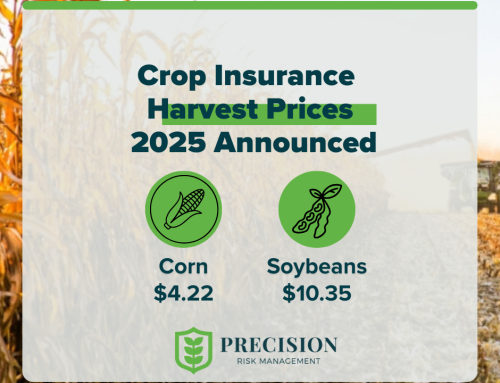Taking a little time for preparation and keeping key reminders about your crop insurance top of mind can be a game-changer, potentially sparing you from significant headaches. Harvest brings government-imposed rules and regulations governing the ‘how’ and ‘what’ of your actions. Fortunately, Precision Risk Management is here to provide you with support. We’ve distilled the most critical points you need to remember and equipped you with essential resources to ensure a smooth and hassle-free harvest with PRM coverage.
Complete your calibration logs for precision technology for harvest.
You need to complete separate calibration logs for both planting and harvest. This is an important required document by the Risk Management Agency (RMA) for anyone using precision yields. Not completing your calibration logs can affect your production reports, claims, and future audits. You can download a blank calibration log here.
Notify PRM immediately if you may have a loss
In general, you must report a loss to your provider 72 hours where there is damage, but no later than 15 days after the end of the insurance period even if not harvested. It is best to contact PRM immediately in case complications arise. Calling your Risk Management Advisor to notify them is all you need to do to initiate the process. Do not take any actions that could alter evidence of loss without explicit instructions from your Risk Management Advisor or Adjuster.
Shifting commodity prices may cause loss situations for you
Keep your eye on the markets. Drops in commodity prices may create a loss situation for growers that have revenue protection plans. Many crops have dropped in price since the Projected Prices and volatility were set in the spring. The Harvest Prices for corn and soybeans will be announced around 11/5. Oat, wheat, and barley Harvest Prices have been set. Your Risk Management Advisor can help walk you through your individual policy and crop to help determine if you have a loss.
Adding new crop in bins that already hold crop
Any grain from prior years in the bins must be measured by a PRM adjuster prior to putting new grain in the same bin. Failing to do so can complicate any potential claim payments you may be owed. If you are planning on adding any new grain immediately, contact PRM so we can measure the production first.
Production losses with silage
The claims process is a little different depending on whether you cut silage or not. PRM has this easy-to-follow flow chart for you to use. If you have any questions or concerns, always contact your Risk Management Advisor before taking any actions.
Same-year production reports benefit you
With an RMA change, you may now report your production in the same year. This allows you to have easier claims, earlier quotes, and easier processing. You can read about all the benefits here.
Keep all production separated by line with enterprise units(EU) and optional units(OU).
You should maintain a clear separation of harvest data and reporting for each individual crop line within those enterprise units. Likewise, for crops insured using optional units, you should report and manage them separately based on the units you have chosen.
The reason for this separation is to ensure that claims and payouts are calculated accurately, taking into account the unique characteristics, yields, and losses of each crop or unit. It also helps in avoiding potential disputes or complications when processing loss claims.




